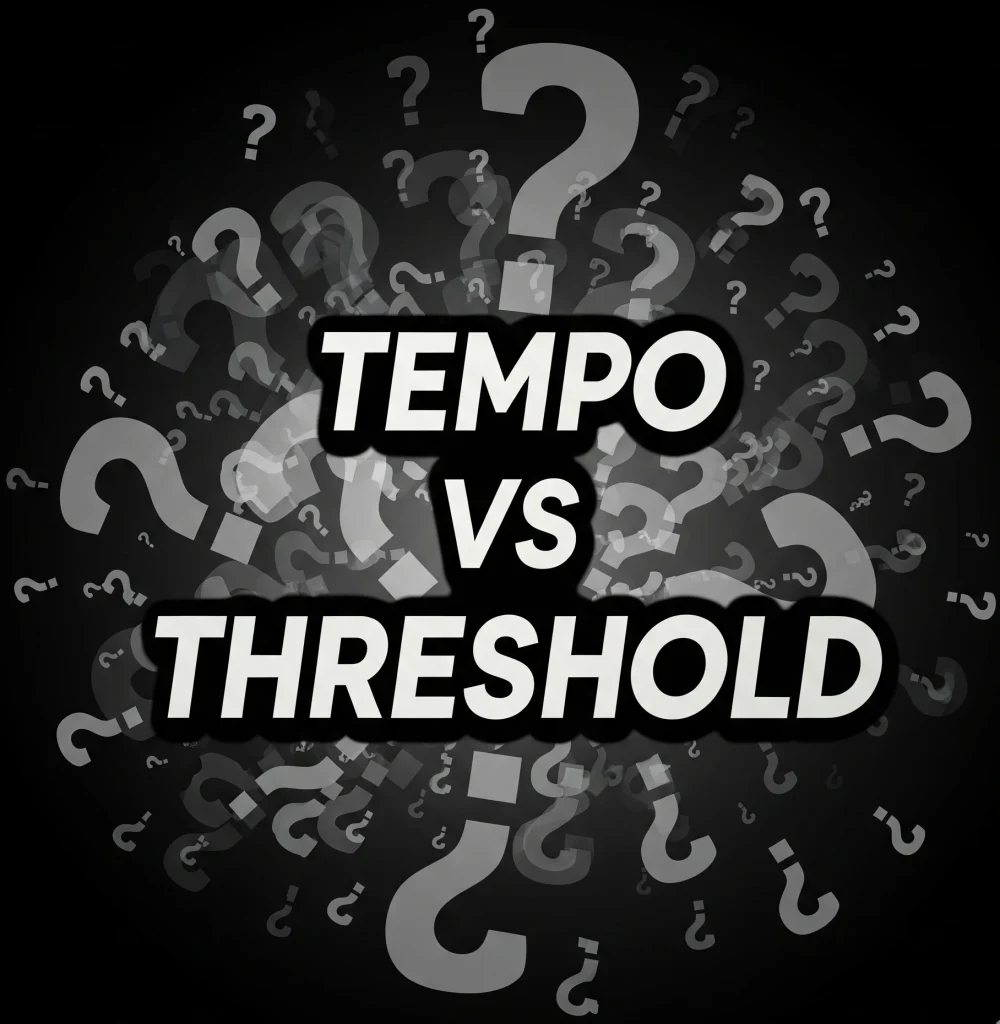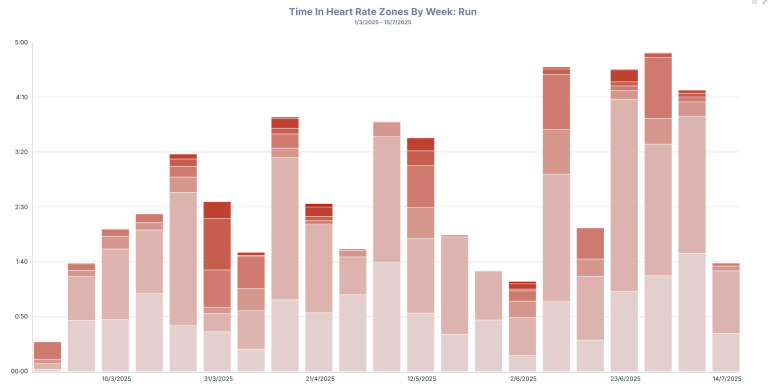
If you’re a marathon runner, or even just a runner, you’ve probably encountered the terms “tempo run” and “threshold run.” They’re staples of any serious training plan, hailed as the key to building speed and endurance.
However, these terms are often used interchangeably, leading to confusion. What exactly is the difference? Are you doing the right workout? And does it really matter what you call it?
Let’s clear the air. Understanding the nuances between these workouts and more importantly, the powerful physiological goal they share, is crucial for unlocking your marathon potential.
The Real Target: Your Lactate Threshold
At the heart of this conversation is a key physiological marker: your lactate threshold.
Think of it as a balancing act. As you run, your muscles produce a substance called lactate. At easy paces, your body has no problem clearing it away and even using it for fuel. In fact, modern science shows lactate is a critical high-energy fuel source for your heart and muscles, and even acts as a key signaling molecule that helps drive positive training adaptations.
But as you increase your intensity, you reach a point where your body produces lactate faster than it can clear it. This tipping point is your lactate threshold. When you cross it, fatigue builds rapidly, and you’re forced to slow down.
The primary goal of both tempo and threshold training is to raise this ceiling. By training at or near this point, you teach your body to become more efficient at clearing lactate, allowing you to run faster for longer before fatigue sets in. It’s like upgrading your body’s engine.
So, What’s the Difference?
While many use the terms as synonyms, a subtle distinction can be very useful for marathon training. Here’s how I define and use them in the training plans I create for athletes:
- Threshold Run: This refers to a workout done right at your lactate threshold pace. Since this intensity is very demanding, it’s best done in intervals. The effort is sharp; the maximum pace you could hold in a race lasting about one hour. In exercise science, this intensity is known as the Maximal Lactate Steady State (MLSS)– the highest effort level where your body can still maintain a balance between lactate production and clearance.
- Tempo Run: I define this as a more sustained effort, typically lasting an absolute minimum of 10 minutes, but typically 20+ minutes at a pace that is slightly slower and more manageable than a true threshold pace. It feels “comfortably hard.”
Research has shown that training at this intensity can dramatically increase the amount of time you can sustain it, a crucial adaptation for the marathon.
Essentially, I use Threshold Intervals to raise your performance ceiling and Tempo Runs to help you get comfortable living just underneath it for a long time.
Finding Your Pace: What “Comfortably Hard” Actually Feels Like

The success of these workouts hinges on hitting the right intensity. Here’s how to dial it in:
- The Talk Test: This is the most reliable guide. At a tempo pace, you should be able to speak a few words or a short, choppy sentence. If you can hold a full conversation, you’re going too easy. If you can’t speak at all, you’re going too hard. (It’s also a great excuse when your running partner tries to have a deep chat mid-workout.)
This reliability isn’t just anecdotal; scientific studies have confirmed a strong correlation between the point where speech becomes difficult and key physiological markers like the lactate threshold. - Rate of Perceived Exertion (RPE): On a scale of 1-10, a tempo run should feel like a 7. A threshold interval might push closer to an 8. It’s a focused, challenging effort, but not an all-out race.
- Heart Rate: For those who train with a heart rate monitor, this effort typically corresponds to 85–90% of your maximum heart rate.
- Pace Formulas: You can estimate your threshold pace as being 25–30 seconds per mile slower than your current 5k race pace, or slightly faster than your half-marathon pace. Your tempo pace might be another 5-10 seconds per mile slower than that.
How I Program These Workouts in a Marathon Plan
In the marathon plans I build, these two types of runs serve distinct but complementary purposes. A typical week might include one of these key sessions:
- Threshold Intervals: A great way to introduce intensity and accumulate time at your true threshold pace with less stress.
- Example: After a warm-up, run 4 x 6 minutes at threshold pace, with a 90 second easy jog for recovery between each interval. Finish with a cool-down.
- Example: After a warm-up, run 4 x 6 minutes at threshold pace, with a 90 second easy jog for recovery between each interval. Finish with a cool-down.
- Classic Continuous Tempo: This is the cornerstone for building marathon-specific endurance and mental fortitude. It teaches you to stay focused and handle discomfort for a prolonged period.
- Example: After a warm-up, run for 25-40 minutes at your tempo pace, followed by a cool-down.
- Example: After a warm-up, run for 25-40 minutes at your tempo pace, followed by a cool-down.
- Tempo in a Long Run: For more advanced runners, I incorporate tempo segments into the weekly long run to simulate running fast on tired legs, a crucial skill for the final 10k of your marathon. You don’t want the first time you feel that to be on race day!
- Example: 1 hour easy, followed by 3 x 15 minutes tempo with 5 minutes easy in between.
- Example: 1 hour easy, followed by 3 x 15 minutes tempo with 5 minutes easy in between.
- Tempo Intervals for Beginners: When starting out, it is a good idea to start with shorter tempo efforts to build a good perception of speed without smashing yourself with fatigue.
- Example: After a warm-up, 5 x 5 minutes at your tempo pace with 1 minute recovery.
By alternating between the sharp, ceiling-raising work of threshold intervals and the steady, strength-building work of tempo runs, we develop both speed and the ability to sustain it. These runs fit nicely into a cycle of training whether you’re a beginner or veteran runner.
This strategic approach is a cornerstone of effective marathon preparation. If you’re looking for a framework to see how these workouts fit into a complete schedule, from base-building easy runs to your final taper, it all comes together in my Ultimate Marathon Training Guide for Beginners.





